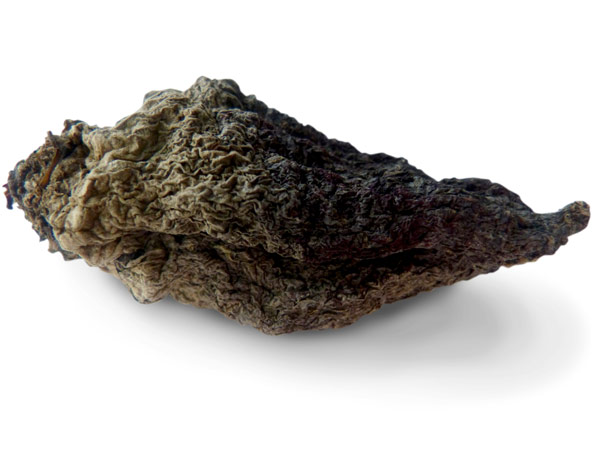Dehydrated Beet
Beta vulgaris L
Donated by Heather A.
2016
Weight: 35.5 g
Length: 8 cm

Most specimens in The Dehydrated Food Museum’s collection came to be dried at room temperature, but this beet root was discovered shriveled in the crisper drawer of a refrigerator. The donor of this specimen was away from home a lot in part because she was working long hours. When she would get home late, she would reach for cheese and crackers, or make herself a sandwich, never thinking to look down into the crisper drawer.
This specimen is very dry, firm, and tough. As it dried, the beet shrank more in its diameter than in its length, resulting in an oblong shape. Its former red color has faded to an earthy brownish dark gray.
Some refrigerators have both a low-humidity and a high-humidity drawer. On the low setting, a slider opens a little window in the drawer that allows moisture and ethylene (the hormone that triggers ripening in many fruits) to escape. The low-humidity setting is generally recommended for storing fruit such as apples, pears, cantaloupes, honeydew melons, peaches, and plums. The high-humidity setting closes the little window, minimizing airflow and keeping moisture in and the gases from the ethylene-emitting fruits out. This setting is recommended for vegetables such as leafy greens, cole crops (cabbage, broccoli, etc.), carrots, cucumbers, beans, peppers, and summer squash. Strawberries, or any fruit that is susceptible to the effects of ethylene gas may also be stored in the high humidity drawer.
The crisper drawer that this beet was found in did not have a humidity-adjustment lever, making it by default a high-humidity drawer. Museum staff theorizes that if a high-humidity drawer is not fully closed, the open gap allows moisture to escape, essentially making the drawer function like a low-humidity drawer. It is possible that in addition to the very long period of time the beet spent in the refrigerator, the drawer may have been slightly ajar, contributing to the beet’s severe dehydration. NEXT >